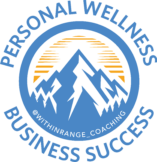Leverage Networks Like BNI, BRN, and Others to Grow Your Business
What Is a Referral Network?
A referral network is a structured system designed to facilitate warm introductions and business opportunities for its members. Unlike casual networking events where people simply exchange business cards, a referral network prioritizes giving and receiving qualified referrals in a structured, industry-specific format.
Some of the biggest referral networks include:
- BNI (Business Networking International) – A worldwide referral network with chapters in nearly every major city.
- Gold Star Referral Network – A growing organization with chapters in multiple states.
- BRN (Business Referral Network) – A chamber-of-commerce-based referral group that focuses on local businesses.
In these organizations, members meet weekly (or biweekly) to build relationships, develop trust, and exchange business referrals. There is typically only one representative per industry in each chapter, ensuring exclusivity and eliminating competition within the group.

The Key Difference Between a Referral Network and General Networking
Many general networking groups, such as Chamber of Commerce mixers or industry meetups, focus on introductions and social engagement. They can be valuable but often lack a structured system to generate actual business referrals.
BNI and other referral groups stand out because they follow a proven system where members actively look for qualified referrals for one another. Instead of relying on chance encounters, members intentionally work to connect each other with warm leads—potential clients who already have an expressed interest in their services.
What Makes a Referral Network Effective?
A referral network operates on three critical principles:
1️⃣ Know – Members meet regularly to learn about each other’s businesses and services.
2️⃣ Like – Relationships form through one-on-one meetings, creating deeper trust.
3️⃣ Trust – The strongest referrals happen when members genuinely trust each other’s expertise.
The result? You train your own sales team every week—people who actively look for opportunities to refer you business.
Understanding Tips, Leads, and Referrals
Not all business recommendations are created equal. In referral networks, we categorize them as follows:
🔴 Tip (Cold Contact – Level 0)
- “I saw a house with peeling paint—maybe you should drop off a business card.”
- No contact information exchanged; no warm introduction.
🟡 Lead (Warm Contact – Level 1)
- “My neighbor mentioned they might need a painter. Here’s their number.”
- Contact information is shared, but the person receiving the referral is not expecting the call—which can feel like cold outreach.
🟢 Referral (Qualified Contact – Level 2)
- “My neighbor needs a painter, and I already spoke to them about you. I’ll connect you via email.”
- Both parties are introduced, making the conversation much more natural and increasing the likelihood of a sale.
🔥 Goal: In a referral network, we strive for qualified referrals, not just tips or cold leads.
The Power of One-to-One Meetings
One of the most valuable aspects of referral networks is one-to-one (121) meetings.
These are structured conversations with other members to:
✅ Learn about their business and ideal client.
✅ Share details about your own services.
✅ Find potential collaboration opportunities.
Most meetings last 30–60 minutes and help build the Know, Like, and Trust factor. The stronger these relationships, the more high-quality referrals you will receive.
💡 Pro Tip: Aim for 1–3 one-to-one meetings per week to accelerate your referral network success.
Clarity in Messaging: Making It Easy to Refer You
The #1 mistake people make in referral networks? Being unclear about what they do.
Example of a weak introduction:
❌ “I’m a business consultant helping people improve their strategies.”
Example of a strong introduction:
✅ “I help small business owners grow their revenue by 20%+ through streamlined marketing and referral-based selling strategies.”
🔹 Formula for a Clear Elevator Pitch:
“I help [target audience] achieve [specific result] by providing [solution].”
Having a clear and concise message makes it easier for members to refer you when they hear a potential client mention a need.
Actionable Strategies for Generating More Referrals
📌 1. Be Proactive with Referrals
- The best way to receive referrals is to give them first.
- Listen for problems your contacts are facing and connect them with the right professionals.
📌 2. Strengthen Your Trust Factor
- Show up consistently at meetings.
- Demonstrate expertise by sharing testimonials and case studies.
- Always follow through on promises—reliability builds credibility.
📌 3. Maintain an Active Presence
- Join the leadership team if possible (e.g., One-to-One Coordinator, Education Chair).
- Regularly attend meetings, engage in discussions, and participate in member success stories.
📌 4. Be Specific in Your Asks
Instead of saying:
❌ “I’m looking for anyone who needs a coach.”
Say:
✅ “I’m looking for small business owners who struggle with lead generation and need a proven referral-based system to grow.”
The more specific and memorable your request, the easier it is for people to find leads for you.
Final Thoughts: You Get Out What You Put In
Referral networks aren’t magic—they require effort and engagement.
If you attend meetings, build strong relationships, and actively give referrals, you will receive more in return.
🔹 Key Takeaways:
✅ Commit to regular one-to-one meetings with members.
✅ Give referrals first before expecting to receive them.
✅ Have a clear, easy-to-remember elevator pitch.
✅ Be specific about who you want to be referred to.
✅ Stay active—the more you engage, the more business you’ll gain.
Ready to Grow Your Business Through Referrals?
📩 If you have questions or want to join a referral network, email me at Ranger@WithinRangeCoaching.com
📍 If you’re in San Mateo, I’d be happy to invite you to a BNI chapter meeting.
🌎 Not local? Search “BNI Chapter Near Me” to find a group in your area.
🚀 Remember: The best is yet to come—if you choose to never settle, never quit, and never peak.
🔹 Like this article? Share it with your network

